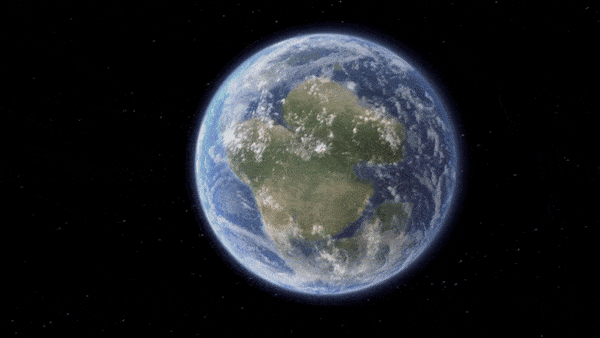When you purchase through links on our website , we may take in an affiliate commission . Here ’s how it puzzle out .
Twenty - five million years ago , asplate tectonicsbegan to draw apart easterly Africa , the landscape painting that would eventually be home to the first humans began to take shape .
Now , new research says that landscape painting — and its lake , rivers and climate — may have look quite unlike than scientists thought .

This radar image highlights portions of three of the lakes located in the Western Rift of the Great Rift Valley, a geological fault system of Southwest Asia and East Africa: Lake Edward (top), Lake Kivu (middle) and Lake Tanganyika (bottom).
TheEast African Rift Valley , as the neighborhood is known , formed where the Somali and Nubian plates are pulling away from the Arabian Plate . The eastern branch of the rift take place through Ethiopia and Kenya , and the westerly subdivision form a elephantine electric arc from Uganda to Malawi .
The eastern outgrowth formed around 25 to 30 million old age ago , whereas the western branch take shape only 10 to 15 million age ago — or at least that ’s what scientist mean . Now , new grounds points to an earlier birth date for the westerly subdivision , too . [ Have There Always Been Continents ? ]
" We now believe that the westerly portion of the falling out formed about 25 million year ago , and is just about as quondam as the eastern part , instead of much younger as other studies have hold , " say Michael Gottfried , a geologist at Michigan State University who co - authored the study .

This radar image highlights portions of three of the lakes located in the Western Rift of the Great Rift Valley, a geological fault system of Southwest Asia and East Africa: Lake Edward (top), Lake Kivu (middle) and Lake Tanganyika (bottom).
" East Africa is traditionally where research worker go to test to understand the evolution of primates and , eventually , humans , " Gottfried told OurAmazingPlanet . " We ’re looking at how the landscapes and environment in Africa changed during the test - up to human evolution . "
Rifting in the western branch 25 million years ago dramatically change how rivers flowed , where lake formed and even theregion ’s climate pattern .
Geological grounds points to tack pixilated and teetotal season , and major rivers that flowed from south to north , Gottfried said . These rivers likely drained into a large lake in the substance of the continent — Gottfried and his colleagues call it Paleo - lake Congo — which no longer exist .

To piece together the story , Gottfried and his fellow , including Nancy Stevens , a paleontologist from Ohio University , collected rock sample distribution , zircon ( a uncommon crystalline mineral that can be used to pinpoint geologic ages ) and fossils , which they correlated with similar specimens from other regions to settle the ages of the rocks encase them .
rock candy deposited more than 25 million eld ago , before the western branch commence rifting , home fossils of moreprimitive , nonextant primates , Gottfried explained . Younger rock-and-roll have primate fossils that are generally more like the primates living in Africa today .
" We kind of think of that period of meter as a transitional period , " he added .

Geologist Eric Roberts of Australia ’s James Cook University led the squad . Their findings were publish March 26 in the diary Nature Geoscience .
This story was provided byOurAmazingPlanet , a sister internet site to LiveScience .
















